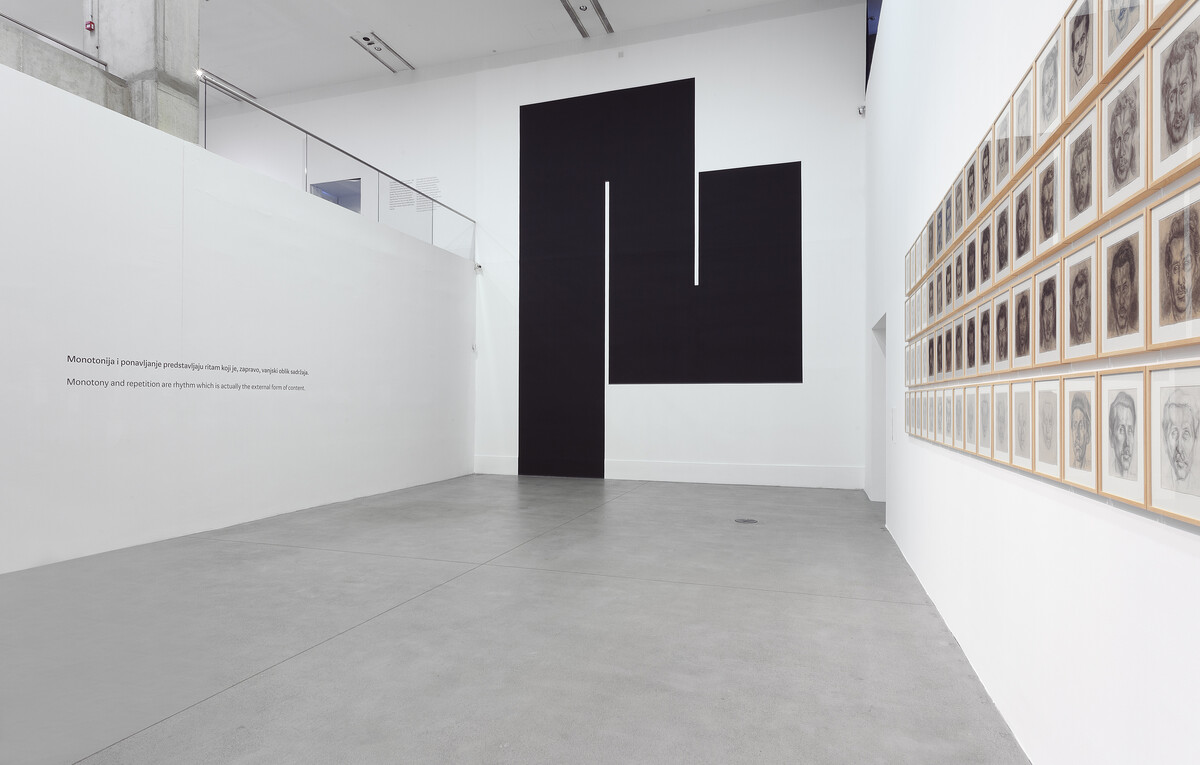From the collection of the Museum of Contemporary Art
April 11–May 12, 2024
Av. Dubrovnik 17
HR-10000 Zagreb
Croatia
Hours: Tuesday–Friday 11am–7pm,
Saturday–Sunday 11am–6pm
T +385 1 6052 700
msu@msu.hr
The connection between Julije Knifer (Osijek, 1924–Paris, 2004) and the Museum of Contemporary Art is long and intense, as testified by a large number of works kept in the Museum, from the earliest to the iconic ones.
Julije Knifer started the series of Self-portraits in 1949 when he decided to quit law school and enroll in Zagreb’s Academy of Fine Art. At first he regarded this series as an exercise, but soon he discovered a deeper meaning in the repetition of the same. Repetition strategies continued also at the time when he resorted to the post-cubist language to turn from real-life motifs to a fully abstract expression. Although the Museum also keeps his first completely abstract pieces, in this condensed anniversary overview, in addition to the earliest Self-portraits, his work is presented from the moment when he renounced colour to additionally narrow down his means and make another restrictive step, directing black and white surfaces only in two directions—vertical and horizontal. In the form that was taking shape, art historian Igor Zidić identified a meander back in 1960. “You might be right,” said Knifer then. “Interpretation is not important to me. Simply, Meander sounds better than Com-po-si-ti-on. If the character is reduced, why wouldn’t the name be too?” Without any intention of ascribing additional meanings, to him meanders were since then “a series of facts making a meander or a series of meanders which are finally nevertheless only one meander.”
The first large solo exhibition in 1966 at the MSU (the then Gallery of Contemporary Art) covering the genesis of the meander was special also for the fact that the members of the neo-avant-garde Gorgona, to which he belonged, dedicated one of their performances to him. Although in this performance they initially criticise him over succumbing to the academic-bourgeois convention of choosing a métier, realising he was speaking in a completely different language, they finally paid homage to him.
Julije Knifer expounded the ascetic method of reduction and repetition, by which he, in a nihilistic response to reality, acknowledged absurdity as the utmost form of freedom, in his Writings in 1976, which we are exhibiting in entirety. In addition to the catalogues of Knifer’s solo exhibitions held at the Museum, there are several group exhibition catalogues which marked the most important phenomena on the art scene of the second half of the 20th century. Their purpose is to remind of the fact that their activity was, more or less successfully, categorised under different common denominators: constructivism, New Tendencies, minimalism, primary or analytical painting, New Art Practice.
The process that led to the “escalation of uniformity and monotony,” with a switch to the acrylic technique in the late 1960s, in a meditative procedure of applying countless layers of paint onto the surface, started to look more and more like a ritual act. A similar process took place when he covered the paper with dense pencil strokes, patiently and minutely, but finally completely black surfaces will reflect light like mirrors.
Starting from the 1970s, growingly frequent residential sojourns in Germany made it possible for him to have much better working conditions than in Zagreb, where he didn’t even have a proper studio. That was when he started making large-scale paintings. In a quarry near Tübingen, in 1979 his largest meander was made, which he named Arbeitsprozess (Work Process). This name could encompass Knifer’s entire body of work. His vocabulary, albeit reduced in expression, strict in terms of geometric regularity, was not guided by a superior, predefined system. Repetition strategies seem like a persistent thought which moves forward and back, defies the sameness and relishes in the uncertainty of differences.
Exhibition curator: Radmila Iva Janković




